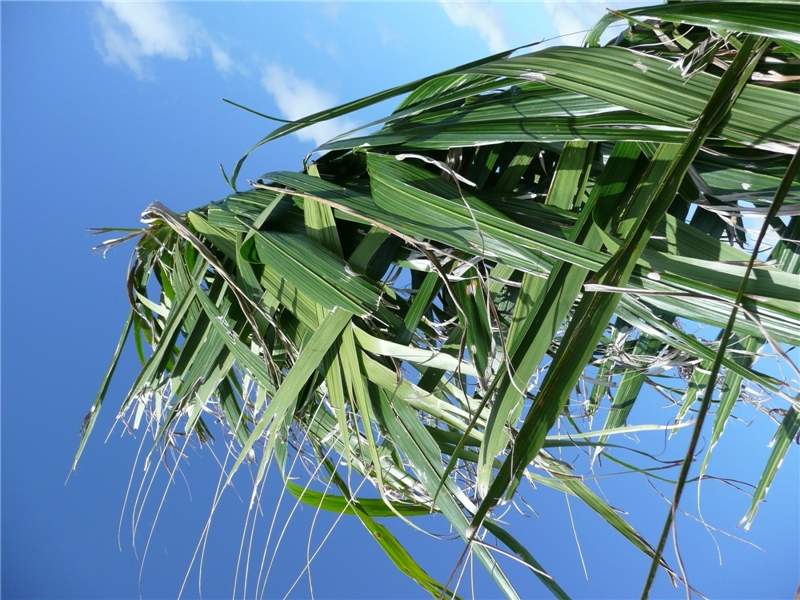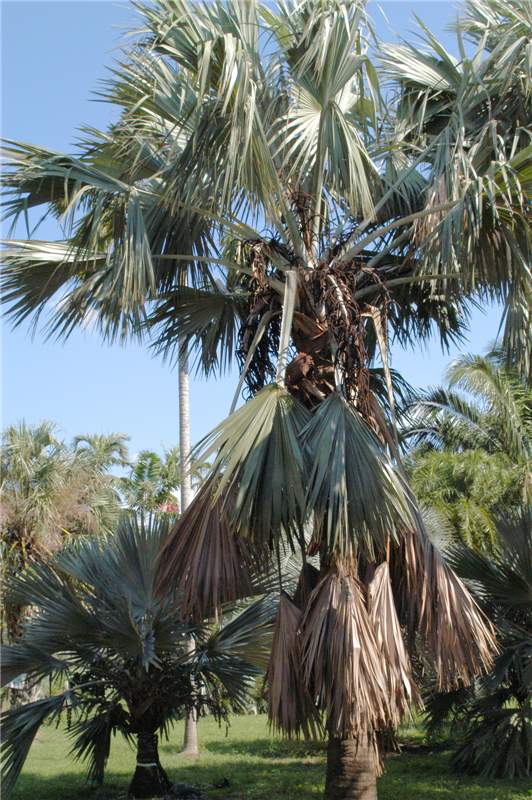Wind Damage
|
Figure 1. Tattered leaflets in Roystonea regia caused by high winds. Photo by T.K. Broschat
|
|
Figure 2. Broken leaves in Bismarckia nobilis caused by high winds. Photo by T.K. Broschat
|
Symptoms
Leaves of wind susceptible species appear tattered, often with only leafletleaflet:
divisions of pinnate leaves
midveins remaining (Fig. 1). Leaves may kink and hang down from the trunk (Fig. 2). In severe wind storms, palms may be uprooted, or the trunk will snap off at varying distances above the ground.
Cause
High winds from storms can damage foliage of susceptible species or snap or uproot other palms. Biotic stresses such as boring insects, woodpeckers, or trunk rotting fungi can predispose palms to snapping off from wind.
Occurrence
Foliar damage is fairly common in species such as Carpentaria acuminata and Pigafetta filaris that have rather soft foliage. Toppling or snapping of palm trunks is rather rare except in localized areas that have experienced severe wind storms.
Additional comments
Tattered foliage can easily be attributed to wind damage, while palms that snap off at or above the soil line may also have structural damage caused by boring insects, woodpeckers, or trunk rotting diseases such as ganoderma butt rot or thielaviopsis trunk rot.




